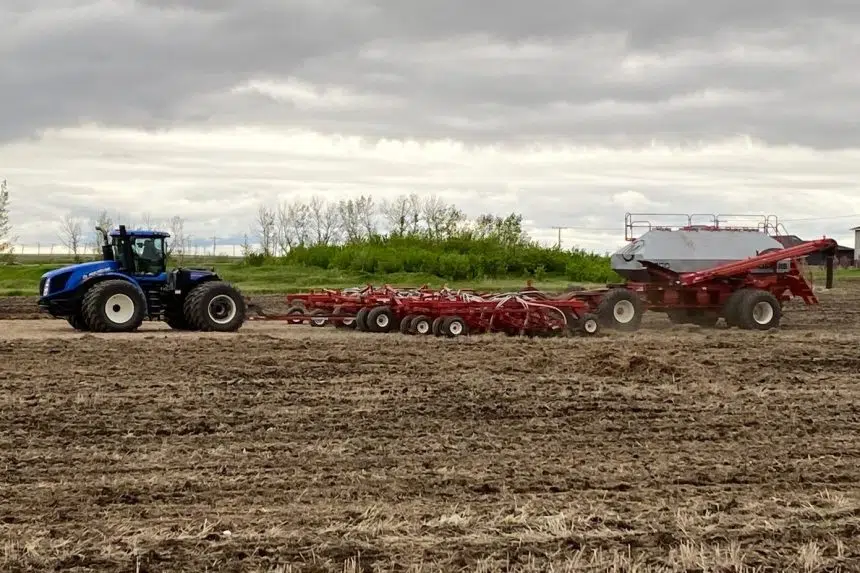The progress of seeding operations in Saskatchewan nearly doubled over the past week.
According to the weekly crop report from the Ministry of Agriculture, farmers made “tremendous progress” in the week ending Monday, reaching 68 per cent. That’s up from 38 per cent in the previous week.
“This is still behind the five-year average of 76 per cent, but it is a very good sign that many producers in the western half of the province have wrapped up seeding or are only a few days away from finishing,” the report said. “Some producers would like to see some rain to ensure their crop has the moisture needed to emerge evenly and not be held back by dry conditions.”
Operations in the northwest are the furthest along, with 84 per cent of the crop in the ground. That’s followed by the west-central region (81 per cent), the northeast (76 per cent), the southwest (73 per cent), the east-central (58 per cent) and the southeast (51 per cent).
The report said farmers in the southeast and east-central regions are dealing with excess moisture in their fields, which is slowing operations.
Bev Pirio owns a mixed grain farm near Radville. While some parts of southern Saskatchewan have got rain, Pirio said the area around Radville has escaped it.
“So we’re able to keep going,” Pirio said. “We haven’t been shut down at all in the last few days. We did have about an inch (of rain) maybe 10 days ago and so we were down for a couple of days then, but I think I’ve been hearing that up by Regina and Saskatoon they’ve been getting more of this rain.”
Pirio said her farm rarely gets rain during seeding.
“We’re coming off of a four-year drought, so we haven’t had much spring moisture other than maybe a late winter storm or something like that. So (we were) pretty excited to get that inch of rain and we would take another inch any day right now,” Pirio said.
“I think that a good portion of the province would feel that they would take some amount of rain just to get the crop started.”
Pirio said her area is probably around the five-year average for progress.
“Maybe even a little bit above that,” she said. “We’ve got a lot of our neighbours that are going to be wrapped up within the next week, especially if we don’t get any of these thunderstorms.”
She said the issue with thunderstorms is that there’s no predictability to them.
“You could get one area that gets three inches and one area that gets two-tenths,” Pirio said. “So it very much depends on where you were and how you get hit.”
According to the report, cropland topsoil moisture in the province is rated as two per cent surplus, 63 per cent adequate, 29 per cent short and six per cent very short. Hay and pasture land is rated at 59 per cent adequate, 31 per cent short and 10 per cent very short.
“The driest regions are the northwest, west-central and southwest, where some producers are worried their newly emerging crop will not have enough moisture to make it through the heat of July without a good soaking of rain,” the report said.
Pasture conditions are rated as six per cent excellent, 45 per cent good, 29 per cent fair, 14 per cent poor and six per cent very poor.
The ministry said crop development is around 70 per cent normal for spring cereals, oilseed and pulses. The development of some crops is behind in parts of the west-central and northwest because of dry growing conditions, while some in the southeast and east-central are delayed due to excess moisture.







